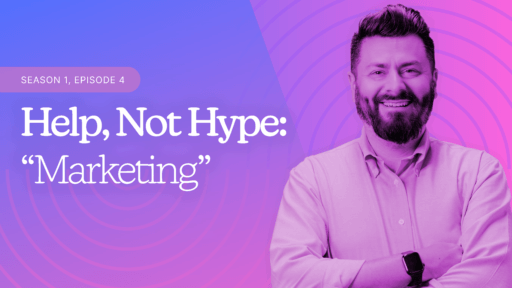“Good communication is the bridge between confusion and clarity.”
Nat Turner
Picture it: You’re in full-blown crisis mode, furiously clicking through homepage after homepage as if your company’s fate is hanging by a thread. What you need is a solution—anything—to stave off the email-shaped catastrophe looming on the horizon. Preferably something like a CRM, but without requiring a PhD in astrophysics just to log in.
You click the first promising link and are met with a sleek, modern homepage. But within seconds, your enthusiasm deflates faster than a beach ball at a porcupine convention.
“Empowering synergistic ecosystems through disruptive innovation and leveraging end-to-end solutions for scalable outcomes.”
What, in the name of all things caffeinated, does that even mean?
You scratch your head, sip your now lukewarm coffee, and feel an overwhelming urge to fire off an SOS to Merriam-Webster. Determined, you click on another link, only to be met with an equally bewildering wall of text:
“Optimizing paradigm shifts to facilitate proactive stakeholder engagement and drive holistic growth.”
By now, you’re convinced that business homepages are less about communicating and more about showing off their ability to string together the most impressive-sounding words possible. It’s like they’ve rounded up the world’s most verbose wordsmiths, locked them in a room with nothing but a thesaurus, and said, “Go forth and baffle!”
If this sounds familiar, congratulations—you’ve experienced Schmarketing in its purest form. And while it might be amusing to laugh at these linguistic gymnastics, the reality is that such jargon-filled language often obscures more than it reveals. It’s like trying to navigate a maze with a blindfold on—frustrating, disorienting, and ultimately ineffective.
So, how do we untangle ourselves from this jargon trap and get back to the business of, well, making sense? The truth is, you don’t have to sound like a walking LinkedIn post to be taken seriously. Let’s break down the telltale signs of Schmarketing overload before your audience hits the snooze button.
The Symptoms of Schmarketing Overload
Wondering if you’ve fallen into the Schmarketing trap? Much like diagnosing a mysterious rash, the symptoms are often clear—if you know what to look for.
Symptom 1: The Jargon Avalanche
You’re halfway through an email to your team when it hits you—you’ve dropped “actionable,” “data-driven,” and “streamline” more times than you’ve had cups of coffee this morning. And you’ve had a lot of coffee.
If your sentences sound like a corporate buzzword generator pieced them together, you’re knee-deep in Schmarketing.
Symptom 2: The Glazed Donut Stare
You’re presenting your latest marketing strategy to a room full of colleagues. You’re halfway through explaining your “multi-faceted, consumer-centric approach to driving engagement” when you notice a peculiar phenomenon. Eyes glaze over, heads nod off, and someone in the back is doodling what looks like a spaceship in their notebook. The signs are clear: your audience is lost in the jargon jungle.
If your audience looks like they’ve been hypnotized by jargon, you’re officially speaking Schmarketing.
Symptom 3: The Lost in Translation Effect
Your latest campaign tagline reads: “Harnessing Cutting-Edge Technologies to Empower Integrated Solutions.” You’re feeling pretty proud until you test it out on your spouse, who squints, leans in like they’re deciphering an ancient code, and finally says, “Are you casting a spell or pitching a product?”
If your marketing messages need a translator, it’s time for an intervention.
Symptom 4: The Acronym Overload
Your documents read like they’ve been hijacked by the alphabet—ABM, MQL, LTV, CAC. It all sounds logical to you, but to the untrained eye, it’s less strategy, and more someone trying to win at Scrabble. Acronyms are scattered across the page like confetti, leaving everyone else feeling like they need Alan Turing himself to crack the Enigma Machine just to keep up.
If your strategy requires a decoder ring to understand, you’ve fallen into the acronym abyss.
Symptom 5: The “Impressive” But Empty Pitch
You’ve just delivered a pitch, confidently tossing around phrases like “hyper-personalization” no less than four times. Your client nods, smiles politely, and then leans in with the dreaded question: “But what does that mean for us?” Cue the panic as you scramble to explain. Suddenly, your impressive language feels as hollow as a chocolate Easter bunny after a rough spring break.
If your pitch sounds impressive but leaves people more confused than convinced, you’ve officially hit Schmarketing overload.
Spotting these symptoms is the first step to avoiding a full-blown marketing coma. The good news? You’re not alone, and there’s a simple fix: clear, straightforward communication that doesn’t sound like it was ripped from corporate Mad Libs.
Breaking Free from Schmarketing Overload
Congratulations! If you’ve made it this far, you’re officially on the road to recovery. Spotting the symptoms of Schmarketing overload is like catching a typo in a company-wide email—once you see it, it can’t be unseen. But now that you’re aware, you can finally start fixing it.
The fix isn’t astrophysics—and it’s actually not about banishing jargon or acronyms altogether. Use them if they make sense to your audience, but don’t assume everyone’s fluent in corporate-speak. The real goal is something far more radical: clarity.
Picture it: communication that doesn’t require a translator, clients who nod because they actually understand (not just out of politeness), and emails that don’t read like they were written by a mad scientist armed with a thesaurus. It’s possible. It just takes a little self-awareness and the courage to say things plainly.
So the next time you feel the urge to “optimize stakeholder engagement” or “facilitate holistic growth,” hit pause and ask yourself: How would I explain this to a friend? Your message doesn’t need to be flashy—it just needs to be clear.
In a world awash in buzzwords and business-speak, be the one who communicates like a real human. Not only will you stand out, but your audience will thank you. And hey, you might just save yourself from becoming the next cautionary tale of a jargon-induced marketing coma.






